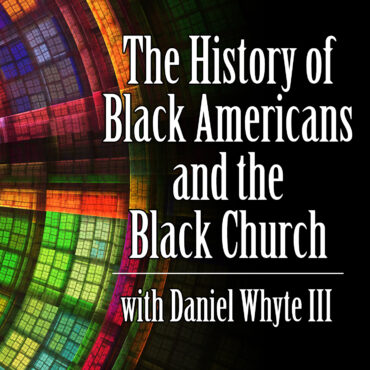
The First West African States: Ghana
Our Scripture verse for today is Galatians 3:28 which reads: “There is neither Jew nor Greek, there is neither bond nor free, there is neither male nor female: for ye […]
 play_arrow
play_arrow
The fight over public education, from Texas to the White House podcast
 play_arrow
play_arrow
[Holiday Voices] My Favorite Holiday Memory With Nikki Cheak podcast
 play_arrow
play_arrow
Zig Ziglar: “What Happens Out There isn’t Nearly as Important as What Happens in Here.” podcast
 play_arrow
play_arrow
 play_arrow
play_arrow
Week 16 – Tom Brady podcast
 play_arrow
play_arrow
Week 16 – Peter King on Injuries in the League, Philip Rivers, and the Broncos on Top podcast
 play_arrow
play_arrow
 play_arrow
play_arrow
Deebo & Joe – Browns fall to Bears, Mahomes tears ACL, Bengals ELIMINATED! Steelers-Dolphins preview podcast

Our Scripture verse for today is Genesis 15:13-14 which reads: “And [God] said unto Abram, Know of a surety that thy seed shall be a stranger in a land that is not theirs, and shall serve them; and they shall afflict them four hundred years; And also that nation, whom they shall serve, will I judge: and afterward shall they come out with great substance.”
Our History of Black Americans and the Black Church quote for today is from Lee June, a professor at Michigan State University and the author of the book, “Yet With A Steady Beat: The Black Church through a Psychological and Biblical Lens.” He said, “Faith in the God of the Bible and an association with the institutional church have had overall positive influences on the African-American community and were key in the survival of the slave experience in America.”
In this podcast, we are using as our texts: From Slavery to Freedom, by John Hope Franklin, The Negro Church in America/The Black Church Since Frazier by E. Franklin Frazier and C. Eric Lincoln, and The Black Church In The U.S. by William A. Banks.
However, our first topic today is some good work done for the “God In America” series titled “The Origins of the Black Church” which was aired by the Public Broadcasting Service. This is just a brief historical overview; we will delve into these topics in great detail in upcoming episodes
The term “the black church” evolved from the phrase “the Negro church,” the title of a pioneering sociological study of African American Protestant churches at the turn of the century by W.E.B. Du Bois. In its origins, the phrase was largely an academic category. Many African Americans did not think of themselves as belonging to “the Negro church,” but rather described themselves according to denominational affiliations such as Methodist, Baptist, Presbyterian, and even “Saint” of the Sanctified tradition. African American Christians were never monolithic; they have always been diverse and their churches highly decentralized.
Today “the black church” is widely understood to include the following seven major black Protestant denominations: the National Baptist Convention, the National Baptist Convention of America, the Progressive National Baptist Convention, the African Methodist Episcopal Church, the African Methodist Episcopal Zion Church, the Christian Methodist Episcopal Church and the Church of God in Christ.
New historical evidence documents the arrival of slaves in the English settlement in Jamestown, Va., in 1619. They came from kingdoms in present-day Angola and the coastal Congo. In the 1500s, the Portuguese conquered both kingdoms and carried Catholicism to West Africa. It is likely that the slaves who arrived in Jamestown had been baptized Catholic and had Christian names. For the next 200 years, the slave trade exported slaves from Angola, Ghana, Senegal and other parts of West Africa to America’s South. Here they provided the hard manual labor that supported the South’s biggest crops: cotton and tobacco.
In the South, Anglican ministers sponsored by the Society for the Propagation of the Gospel, founded in England, made earnest attempts to teach Christianity by rote memorization; the approach had little appeal. Some white owners allowed the enslaved to worship in white churches, where they were segregated in the back of the building or in the balconies. Occasionally persons of African descent might hear a special sermon from white preachers, but these sermons tended to stress obedience and duty, and the message of the apostle Paul: “Slaves, obey your masters.”
Both Methodists and Baptists made active efforts to convert enslaved Africans to Christianity; the Methodists also licensed black men to preach. During the 1770s and 1780s, black ministers began to preach to their own people, drawing on the stories, people and events depicted in the Old and New Testaments. No story spoke more powerfully to slaves than the story of the Exodus, with its themes of bondage and liberation brought by a righteous and powerful God who would one day set them free.
Remarkably, a few black preachers in the South succeeded in establishing independent black churches. In the 1780s, a slave named Andrew Bryan preached to a small group of slaves in Savannah, Ga. White citizens had Bryan arrested and whipped. Despite persecution and harassment, the church grew, and by 1790 it became the First African Baptist Church of Savannah. In time, a Second and a Third African Church were formed, also led by black pastors.
In the North, blacks had more authority over their religious affairs. Many worshipped in established, predominantly white congregations, but by the late 18th century, blacks had begun to congregate in self-help and benevolent associations called African Societies. Functioning as quasi-religious organizations, these societies often gave rise to independent black churches. In 1787, for example, Richard Allen and Absalom Jones organized the Free African Society of Philadelphia, which later evolved into two congregations: the Bethel Church, the mother church of the African Methodist Episcopal (AME) denomination, and St. Thomas Episcopal Church, which remained affiliated with a white Episcopal denomination. These churches continued to grow. Historian Mary Sawyer notes that by 1810, there were 15 African churches representing four denominations in 10 cities from South Carolina to Massachusetts.
In black churches, women generally were not permitted to preach. One notable exception was Jarena Lee, who became an itinerant preacher, traveling thousands of miles and writing her own spiritual autobiography.
We will continue this brief historical overview of the black church in our next podcast.
_______
Our second topic for today is “The First West African States: Mali (Part 1)” from John Hope Franklin’s book, From Slavery to Freedom. He writes:
As Ghana began to decline, another kingdom in the west arose to supplant it and to exceed the heights that Ghana had reached. Mali, also called Melle, began as an organized kingdom about 1235, but the nucleus of its political organization dates back to the beginning of the seventh century. Until the eleventh century it was relatively insignificant and its mansas, or kings, had no prestige or influence.
The credit for consolidating and strengthening the kingdom of Mali goes to the legendary figure Sundiata Keita. In 1240 he overran the Soso people and leveled the former capital of Ghana. It was a later successor, however, who carried the Malians to new heights. Variously called Gonga-Musa and Mansa-Musa, this remarkable member of the Keita dynasty ruled from 1312 to 1337. With an empire comprising much of what is now French-speaking Africa, he could devote his attention to encouraging the industry of his people and displaying the wealth of his kingdom. The people of Mali were predominantly agricultural, but a substantial number were engaged in various crafts and mining. The fabulously rich mines of Bure were now at their disposal and served to increase the royal coffers.
We will continue looking at this topic in our next episode.

Our Scripture verse for today is Galatians 3:28 which reads: “There is neither Jew nor Greek, there is neither bond nor free, there is neither male nor female: for ye […]

Copyright Blackpodcasting 2025